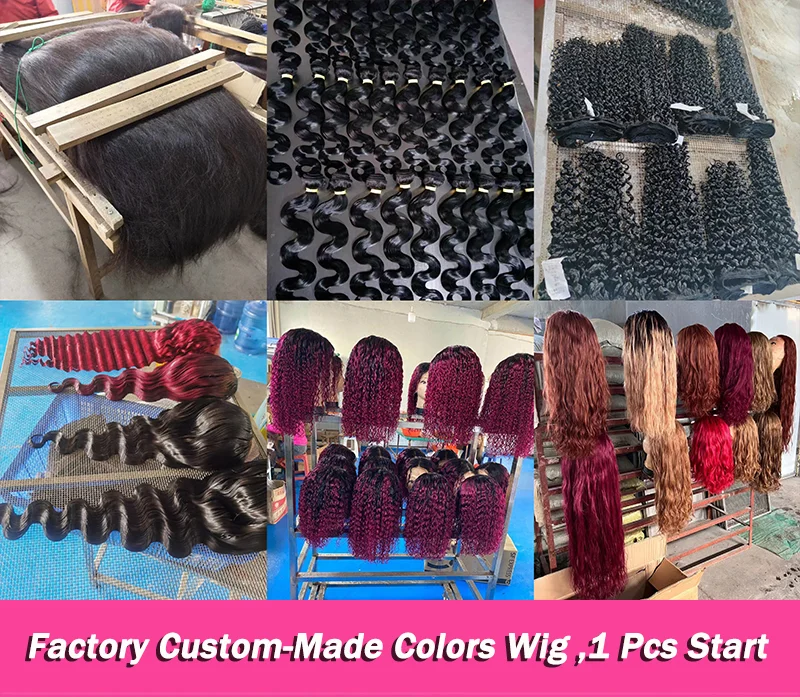Wigs created from natural hair are among the trends. If you want to have something of this kind as well, consider the present achieves. Here, you will find a complete guide of how to make your wig from natural hair. This section is devoted to in-depth instructions on the procedure. Consider all the tips and pieces of advice to be well-informed. Note that your knowledge is the step towards ending up with an outstanding wig and professional experience in this area.
Information for wig with natural hair
Materials
The list of things you need to make a wig on your own is not extensive. In addition to the available ad desired hair, you will need a full lace wig cap that corresponds to your complexion, or you may create a cap on the basis of fabric save your money.
Instructions
Before stating the process, select the hair that will be used for the wig. It is recommended to choose the natural hair; however, as long as you fell experienced and skillful after numerous previous wigs, you may experiment with synthetic hair, for instance. However, in the majority of cases, the natural hair wigs look more realistic, and you will definitely be able to style them as you want.
Execution
Finally, when the preparatory stage of wig making comprising sorting, washing, and measuring the hair is over, proceed to seam it to the lace cap you have prepared. Try to be careful, and you wig will be brilliant. Be sure that if you follow all the instructions and browse other developments, you will advance yourself to the level of professional creativity.


Construct the Wig with natural hair
Sewing
One of the primary skills you will need to learn when creating a natural hair wig is how to attach hair to the wig cap. There are several ways to do so, including sewing. When following the step-by-step descriptions, you will learn how to keep the hairpiece firmly attached to the foundation and create a natural look.
Craft and Attach a Wig Bang
A wig’s bang is another part that requires special crafting and attaching skills. Once you have learned how to create them by following this guide, you can customize your wig to you likings and make a perfect fit.
Leave Out Hair
While making a wig, you may want to create a lace or skin part that would be less visible. This ability would allow you to wear your hairpiece in various different ways and styles.
Maintenance
Wash the Wig
One of the essential processes needed to keep your natural hair wig appear gorgeous is to wash it regularly. This part of the program will give you an overview of how to wash your headwear without damaging it.
How to Refresh a Wavy Wig
In this part, you will learn how to revamp an old wig and make it look like new.
Troubleshooting
Frizz Control
Frizz is the major problem of natural hair wigs. It is hard to avoid after a considerable amount of time, although it can be managed. The following section offers arguments relating to the prevention or minimization of the above condition.
Knot Bleeding
It is a situation when the knots of through with the hair has been sewed start fading out. The part below provides an explanation on how to avoid the bleeding.
Making a wig out of natural hair has the potential of being a delightful experience that would benefit you by not only creating custom hair but allowing you to learn more about the hair and its care. The provided guide was created to arm you with the information and skills necessary to make a beautiful and natural-looking wig.
FAQs
What is the best type of natural hair for wig making?
The best type of natural hair for wig making depends on the effect you want to achieve and your budget. If you need a long-lasting wig, Asian hair will be the best option as its natural structure is thick and resistant to damage. In turn, European hair is finer and lighter, giving a soft and natural look. If you are on a budget, Indian hair is the best option, as it is strong and suitable for texture of many types of hair – in addition, it is naturally wavy and thick.
How often should a natural hair wig be washed?
Natural hair wigs don’t need to be washed as frequently as your hair. They should be washed every ten to fourteen days. However, if the scalp of your wig starts to look oily or the product build-up is so large that it affects the styling and freshness, it is also time to apply the procedure. For washing, choose a sulfate-free shampoo and use lukewarm water to keep the wig clean without stripping its natural oils.
What are the best storage methods to keep a natural hair wig looking as good as new?
The best way is to put it on a mannequin head or wig stand that will allow it to keep its shape and the hairstyle you gave it. When storing for a longer period, it should be protected from direct sunlight as it may both fade the color and damage the hair. If you do not have a head, you may place the wig in a silk or satin bag. Pay attention that constant friction with dust may cause tangling and damage of the hair.
Can I color my natural hair wig?
Yes, as it is natural hair, you can dye it the way you always do with your hair. However, it is important to approach the first dying with caution and try strand tests first. If you are not confident in your skills, you may seek the help of a specialist whose sphere is coloring wigs.

